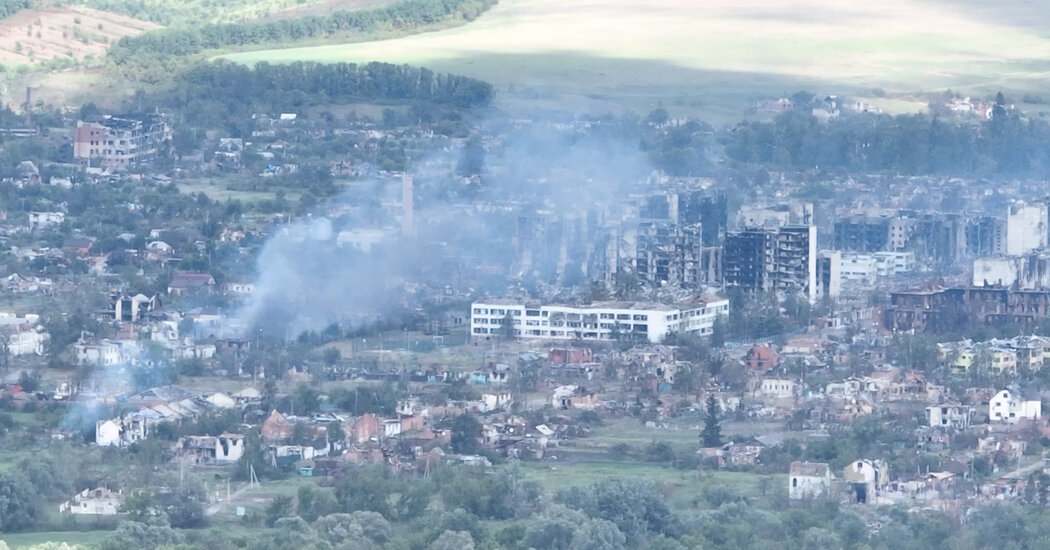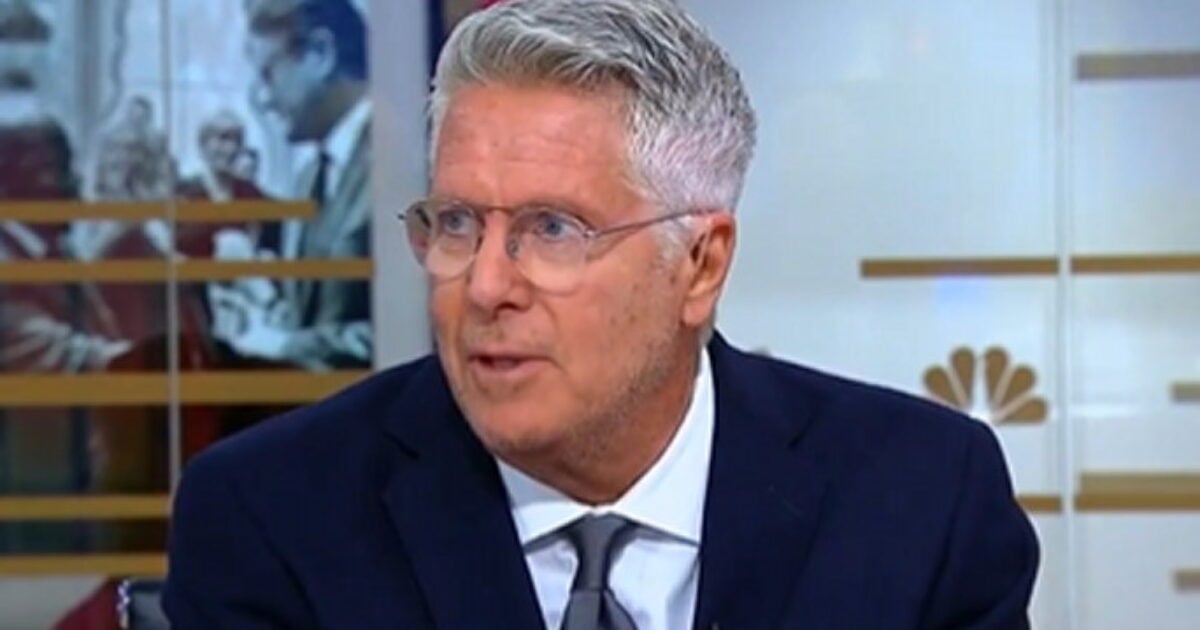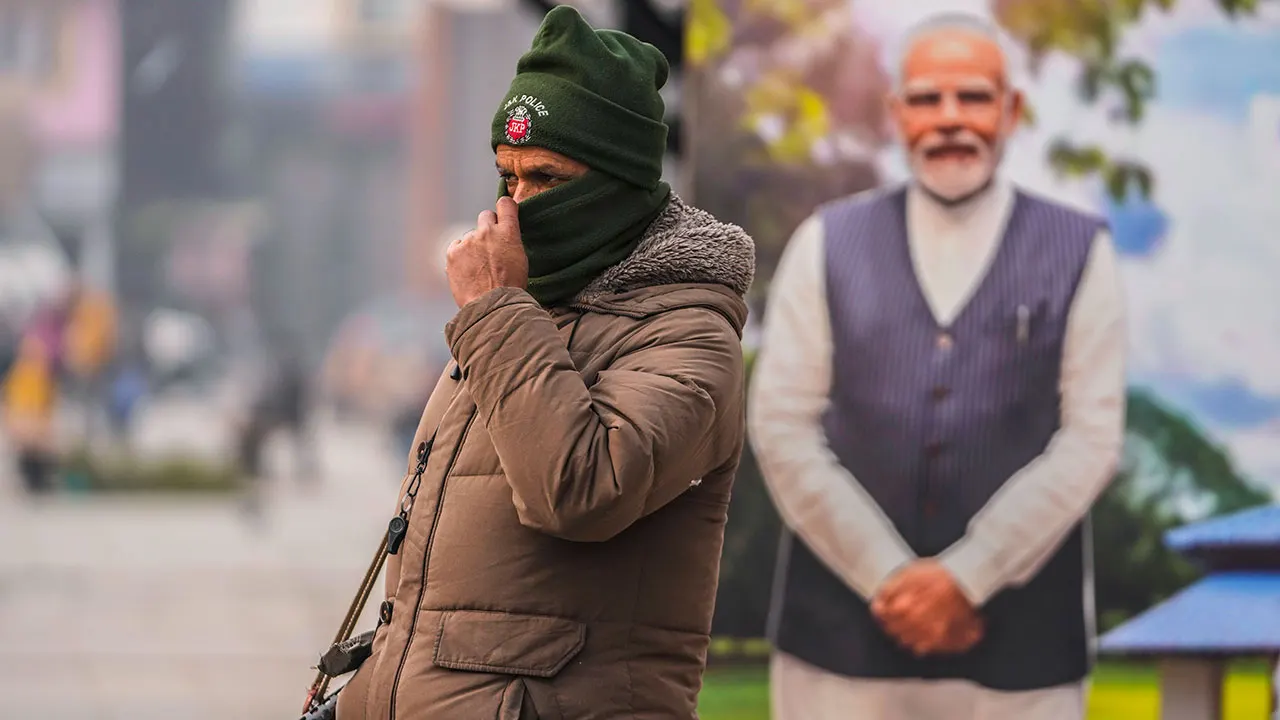A month into Russia’s push across the border in northern Ukraine, Western weapons and Ukrainian reinforcements have largely stalled the attack. But they came too late to save one town, Vovchansk, where the city hall, a cultural center, countless apartment blocks and several riverside hotels are all now in ruins.
A small town divided by the Vovcha River, Vovchansk was once a regional tourist attraction — a pleasant base from which to explore the chalk hills nearby. But it is also three miles from the Russian border, and when Russia began a cross-border offensive on May 10, it became Ukrainian forces’ stand-your-ground position.
The front line still runs through Vovchansk, about 70 percent of which remains under Ukrainian control. And a month of fierce fighting and relentless bombing by Russia has decimated the town, forcing almost everyone left there to flee.
“My small, peaceful town, full of trees and so many flowers! It was drowning in greenery,” said Tetyana Polyakova, a former resident, in an interview last week. She described how wildfires had burned through the forest and the town’s buildings became shells, with black fire marks on what remained of their walls. Huge clouds of smoke rose after each strike, enveloping her home and the rest of the town.
“There is no Vovchansk anymore,” she said.
The Russian attack in the north raised concerns in Ukraine and among its Western allies that a breakthrough could imperil Kharkiv, the country’s second-largest city. The new front, apart from stretching Ukrainian troops, was threatening to reoccupy territories in the region that Russia had already held for a few months in 2022.
As bombs and missiles rained down on Kharkiv and the region, an average of 20 Russian glide bombs — large guided strikes from the air — have been falling on Vovchansk daily.
The Ukrainian military urgently reinforced the area with multiple brigades and the United States, following most of Ukraine’s European allies, lifted a ban on Ukraine’s using American weapons to fire on Russian territory.
Justifying the decision in an interview with CBS News on Sunday, the White House national security adviser, Jake Sullivan, said Russia was “moving from one side of the border directly to the other side of the border and it simply didn’t make sense not to allow the Ukrainians to fire across.”
The Ukrainian army took swift advantage of the change, using additional artillery to help stall the Russian offensive. “Now, Kharkiv is still under threat, but the Russians have not been able to make material progress on the ground in recent days in that area,” Mr. Sullivan said.
Ukraine’s president, Volodymyr Zelensky, also has called the defensive operation a success. “The Russian Army has failed to execute their Kharkiv operation,” he said on Saturday, in his daily video address.
On Monday Lt. Denys Yaroslavsky, a commander of the reconnaissance battalion in Ukraine’s 57th Brigade, which is deployed near Vovchansk, said the Russians were still bombarding the town, but were not making progress toward capturing it.
“We now have complete control over the enemy’s logistics,” he said in a phone interview. “They keep trying to get into Vovchansk in small groups, but that won’t change the situation.”
The scope of Russia’s northern offensive was always believed to be limited; it lacked the troop numbers to reach Kharkiv. President Vladimir V. Putin of Russia said that the goal was to create a buffer zone along the border.
But Russia seems to have fallen short even of more limited goals, according to Rob Lee, a senior fellow at the Foreign Policy Research Institute and an expert on the Russian military and modern warfare, who said, “They did not make as many gains as possibly they could have.”
Mr. Lee said this might have been a result of the heavy equipment losses that Russia endured this year in the Donbas region of eastern Ukraine as its forces took the town of Avdiivka and then a few villages to its west. At the same time, Ukraine’s forces have been strengthened by the much-delayed arrival of new weaponry and ammunition from the West.
Most experts assessed that Russia’s main goal in opening the northern front was to stretch Ukraine’s forces, pulling some of them away from the Donbas region and weakening Ukrainian defenses there.
But though some Ukrainian forces were indeed sent north, Russia has so far not seized on their absence from the Donbas region to gain much new ground.
“Instead, we are seeing Russia pull forces from the Donbas to Kharkiv, too, which is a bit of a strange thing to do,” said Mr. Lee.
Still, Russia in general has seized the advantage in the war, capitalizing on the severe lack of ammunition and depleted troop numbers that were handicapping Ukraine. In the north, in the Donbas and in southern regions near Zaporizhzhia, it is Russia that is pressing forward, albeit slowly, while Ukraine digs in.
Vovchansk, which had about 17,000 residents before the full-scale war, stands as the latest casualty of the mayhem. It has joined the list of Ukrainian towns turned to rubble, though its destruction has not significantly shifted the military balance along the front.
“It took three weeks to do to Vovchansk what it took a year to do to Bakhmut,” said Valerii, a junior sergeant in the 57th Brigade’s reconnaissance battalion who goes by the call sign Fregat. He said he had fought in Bakhmut, a bitterly contested city in the Donbas, for a year before it finally fell to Russia in May 2023.
“For three years of war I have been in many places, everywhere Russians have similar tactics, they are destroying whole cities and villages,” said Lt. Col. Oleksandr Bukatar of Ukraine’s National Guard, who is fighting in the north of the Kharkiv region. “They make ruins to show success.”
The people of Vovchansk had already survived two winters without heating or running water, after damage from earlier battles. They would seek out wells around town and mark them to let others know where they could get water.
Many of those who stayed volunteered to distribute humanitarian aid to those less able; a high percentage of the remaining residents were elderly. They would often rely on hot meals supplied by World Central Kitchen, an aid organization.
The town was shelled regularly even before May 10. Those who stayed despite the dangers and hardships had been determined not to abandon their homes. Only now they were forced to, as those homes were destroyed.
Ms. Polyakova, 53, did not evacuate for more than two years of war. That changed last month when “the hell started,” she said.
The town’s community center, a large yellow building where volunteers gathered to receive and distribute aid, was destroyed by bombing. Ms. Polyakova used to work in Vovchansk’s House of Culture as a director of theater events. That building, too, has been destroyed.
“Yesterday they bombed my apartment,” she said in an interview from Kharkiv, where she is living in a dormitory for displaced civilians. “Now I have nowhere to go back to — my entire district is completely destroyed.”
The position of the front line, cutting through the center of Vovchansk, has only worsened the damage.
The battle continues, but the front is not shifting.
“We are holding our positions and no one retreats,” said Oleksandr, the drone operator at the reconnaissance battalion of the 57th Brigade. The heavy use of drones has made it difficult for both sides to advance.
“It reminds me of the First World War, the Western Front in Europe, when both sides found it very difficult to attack,” said Ben Barry, senior fellow for land warfare at the International Institute of Strategic Studies.
Every day, Ms. Polyakova monitors the channels of Ukrainian soldiers on the social media app Telegram, looking for videos of her destroyed town. That’s how she knows that a bomb hit the roof of her apartment block on June 4. “I loved this town — everyone loved it,” she said. “It seems I cannot just let it go.”















